

'If past events help predict future ones, then we have probably reached the peak of the 2015–2016 El Niño,' Nasa said last month.
'Warmer-than-average waters in the eastern tropical Pacific Ocean should start to cool off and shift westward.'
El Niños are triggered when the steady, westward-blowing trade winds in the Pacific weaken or even reverse direction, triggering a dramatic warming of the upper ocean in the central and eastern tropical Pacific.
Clouds and storms follow the warm water, pumping heat and moisture high into the overlying atmosphere.
These changes alter jet stream paths and affect storm tracks all over the world.

Precipitation was especially high across parts of eastern Brazil and areas of southern South America, much of western Europe, western Mongolia, some coastal regions in southeastern China, and much of the coastline along southern and southwestern Australia
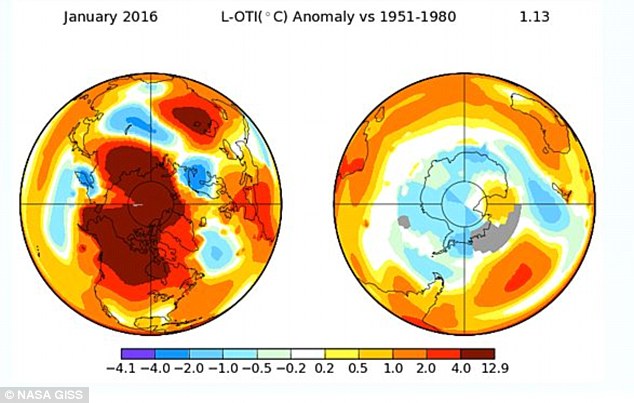
Warm temperatures in the Arctic during January have been linked to a different phenomenon known as the Arctic Oscillation. This involves differences in air pressure over the Arctic and lower latitudes
This year's El Niño has caused the warm water layer that is normally piled up around Australia and Indonesia to thin dramatically, while in the eastern tropical Pacific, the normally cool surface waters are blanketed with a thick layer of warm water.
This massive redistribution of heat causes ocean temperatures to rise from the central Pacific to the Americas.
It has sapped Southeast Asia's rain in the process, reducing rainfall over Indonesia and contributing to the growth of massive wildfires that have blanketed the region in choking smoke.
El Niño is also implicated in Indian heat waves caused by delayed monsoon rains, as well as Pacific island sea level drops, widespread coral bleaching that is damaging coral reefs, droughts in South Africa, flooding in South America and a record-breaking hurricane season in the eastern tropical Pacific.
Even as the El Nino weather phenomenon continues to impact global temperatures and crops, its counterpart La Nina is increasingly expected to emerge in the coming months for the first time in four years.
The return of La Nina, Spanish for 'the girl' and characterised by unusually cold ocean temperatures, is possible later this year, the forecaster have said.
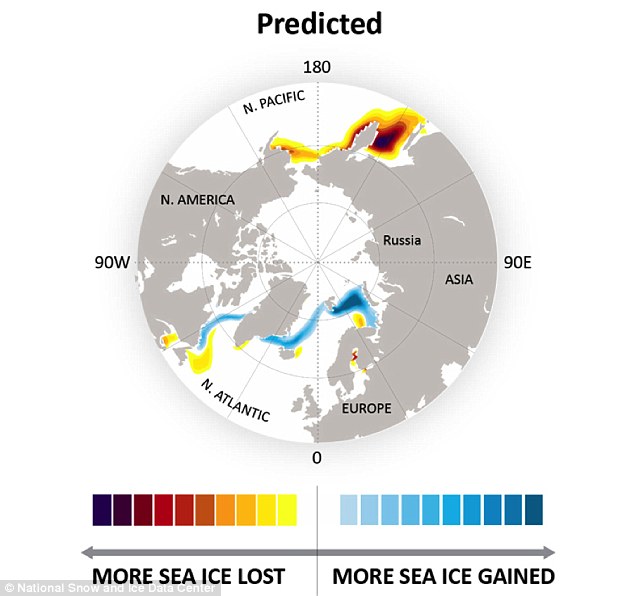
Observations show an increase in the rate of winter sea ice loss in the North Atlantic sector of the Arctic up until the late 1990s followed by a slowdown in more recent years. The observed trend over the period 2005 to 2015 is actually positive (a tendency for more ice)
 |
Day|Week

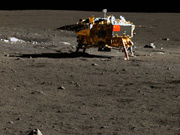 China releases HD true color images of lunar surface
China releases HD true color images of lunar surface To-be flight attendants undergo training at snow-covered field
To-be flight attendants undergo training at snow-covered field Aerial photos taken on J-11 fighter
Aerial photos taken on J-11 fighter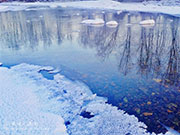 'Coldest town in China' — a fairyland you don't want to miss
'Coldest town in China' — a fairyland you don't want to miss Deep love for breathtaking Hainan
Deep love for breathtaking Hainan Beautiful Chinese tennis player Wang Qiang goes viral online
Beautiful Chinese tennis player Wang Qiang goes viral online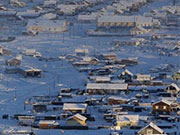 Minus 71 degrees! Coldest village on earth
Minus 71 degrees! Coldest village on earth Chinese pole dancing master opens class in Tianjin
Chinese pole dancing master opens class in Tianjin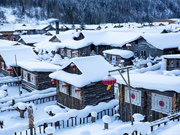 The most beautiful town of snow in China
The most beautiful town of snow in China SWAT members hold romantic wedding in E China
SWAT members hold romantic wedding in E China